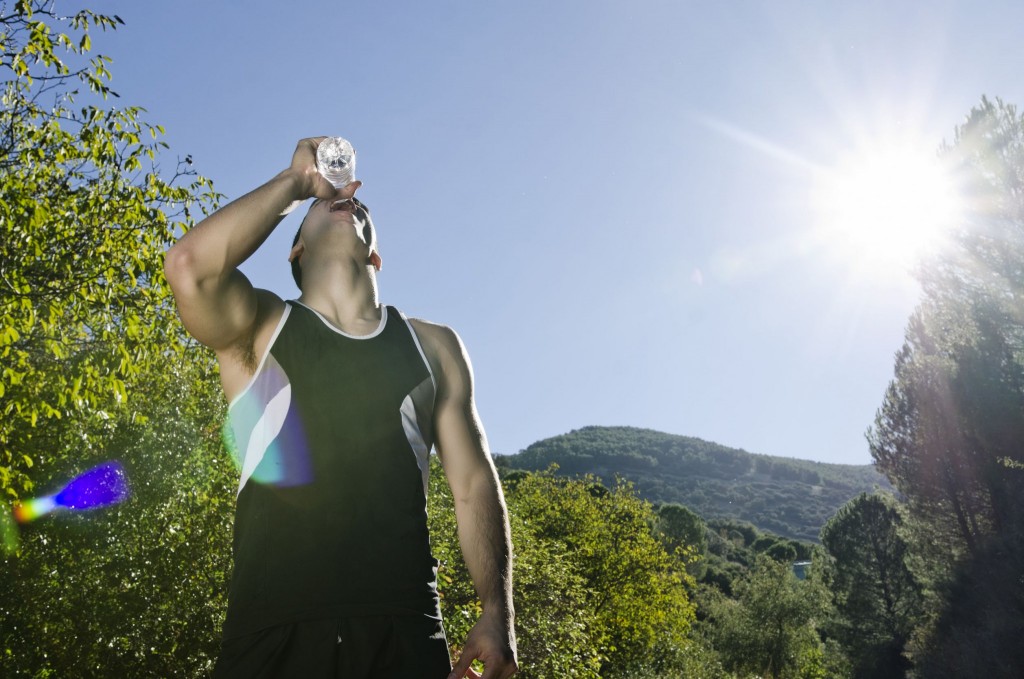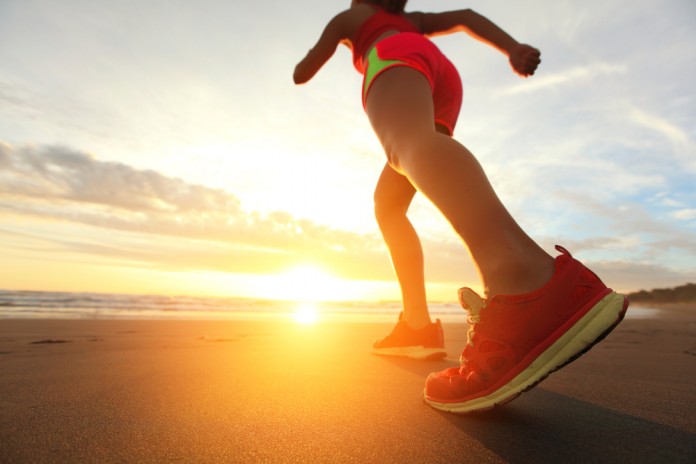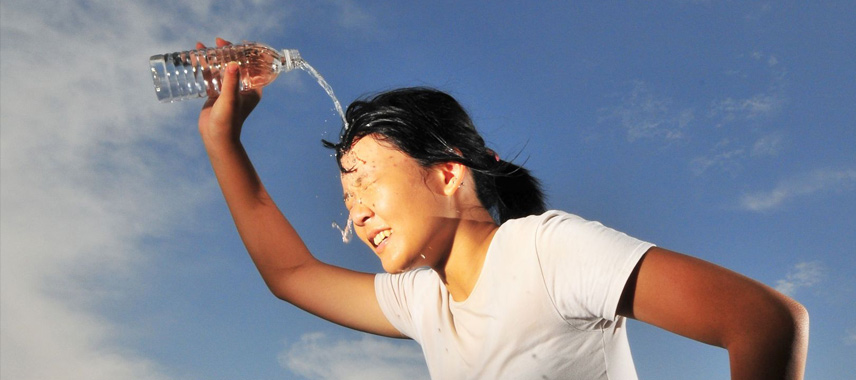Preventing dehydration in hot and humid climates is essential during both training and racing. Dehydration adversely affects your performance during training and slows your ability to recover for your next workout. In extreme cases of dehydration while exercising you risk nausea, vomiting, diarrhea, fainting or disorientation. This should never be considered a ‘normal’ consequence of training in a hot climate. With proper hydration and sports-specific nutrition while you train and race, you can easily prevent the onset of these adverse conditions. Not only will you perform better, but you will enjoy your race far more.
How does our body react in hot conditions?
One of the worst conditions an athlete can face is a hot, humid and windless one, in which exercise occurs at a high rate of intensity. This can put the body under extreme pressure, which can in turn affect performance.
Our bodies deal with extreme heat through thermoregulation. This helps us to stay at a consistent core temperature (36 to 37.5ºC). However hot and humid conditions can disrupt our thermoregulation. We can help to prevent this stress on our bodies by correctly hydrating and refueling. So if you’re out exercising in these conditions, you need to alter your nutrition strategy compared to when you train in cooler climates. This will help to ensure your body continues to correctly thermoregulate, even with the added stresses of the climate and your training intensity.

It’s all about the sweat!
The way our bodies deal with increased temperatures or humidity is by sweating. Sweat is evaporated on the skin surface and heat is lost, therefore our core temperature remains regulated. When you sweat, your blood volume decreases, so less blood returns to your heart. As a result, the amount of blood your heart pumps with each beat decreases, consequently less oxygen-rich blood reaches your working muscles. Your rate of aerobic energy production decreases, and you must exercise at a slower pace.
However in hot and humid climates heat exchange between the body and environment is substantially impaired, which can lead to serious performance reductions and increase risk of heat illness. If we don’t prepare ourselves for this sweat loss then our core temperature usually increases and this can lead to negative side effects such as dizziness, nausea, and disorientation. Definitely not what you want during your race!
When you sweat, your body loses the essential electrolytes (mineral salts) sodium, potassium, magnesium and calcium. These electrolytes are important for maintaining normal muscle function (e.g. preventing muscle cramps) and for supporting your immune system.
Therefore your ideal nutrition strategy for training and racing in hot and humid climates should be focused on 3 key elements combined (not at the exclusion of each other):
- Water
- Electrolyte replacement
- Carbohydrates
Adequate intake of carbohydrates and electrolytes during long or intense events can help to prevent these nasty side effects and maintain a safe core temperature so our bodies can work more effectively.
How to prevent dehydration
As well as having effective carbohydrates during training and competition, attention should also be placed on appropriate fluid intake. This is especially important in hot environments.
When we are in a cool and dry environment such as in an office or at school, it is much easier for our bodies to stay at a steady core temperature and thermoregulation is less important. However when we train or compete outdoors in a hot and/or humid climate our bodies are put under more stress so we need the right fluid and fuel to cope with this stress. This means that you need to alter your hydration strategy when you’re exercising outdoors compared to when you are indoors within a climate controlled environment.
For these reasons, plain water by itself is usually not enough to prevent dehydration while exercising longer than 1 hour in hot conditions. Your body needs proper fuel to continue functioning at peak performance over the prolonged or intense period of time.
Tips for maintaining hydration while training & racing:
- Start your exercise well hydrated (such as having a minimum of 750ml of water)
- Drink plenty of fluids from the time you wake up and keep drinking to a plan all day. Steady drinking throughout the day/night will have you better prepared than drinking large amounts of fluid irregularly. Binging on fluids immediately prior to exercise will only make you feel bloated and your body won’t have enough time to process the fluids effectively for performance gains.
- Include carbohydrate-rich beverages such as PURE Electrolyte Hydration drinks to continually top up carbohydrate stores and maintain fluid balance. The carbohydrates are essential to replacing glycogen stores in your muscles which are lost during exercise.
- Ensure your sports nutrition includes electrolytes, to replace those lost during sweating. This will help your muscles perform effectively during exercise and assist with preventing cramp.
- Keep fluids cool with ice (alternatively, freeze drinks the night before allowing them to defrost slowly over the day of competition). Cooled drinks will help regulate your core temperature.
- Still beverages may be better tolerated than carbonated fizzy drinks, especially if you find you are nervous before the event.



